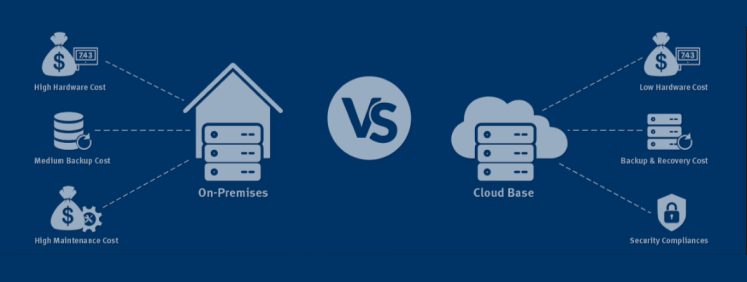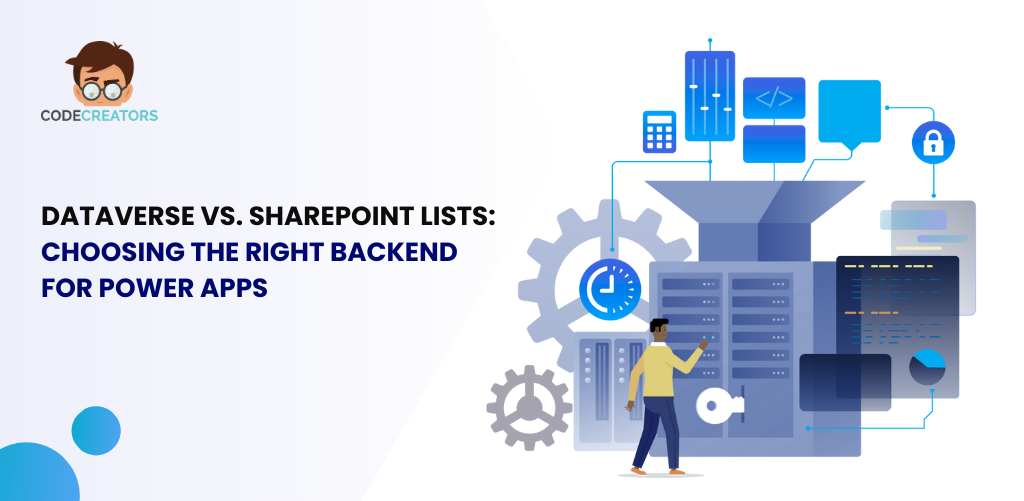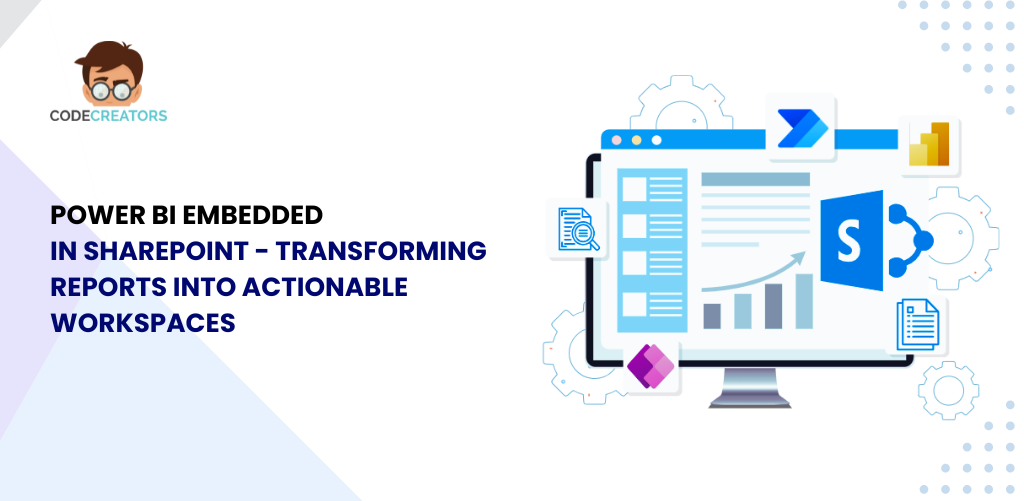Cloud vs On-Premises: Which SharePoint Cost Model Saves More Money?

SharePoint, one of the most trusted online platforms, deals with document management, collaboration, and workflow automation. It has allowed organizations to be more process-orientated concerning workflows, critical data storage, and teamwork. Now with SharePoint, however, a choice is extremely vital: which platform should the organizations choose to take up a cloud model (SharePoint Online) or an on-premises installation (SharePoint Server)?
The financial implications of such a decision are great. Both models have different cost structures, advantages, and challenges. In this article we will compare the cloud vs on-premises SharePoint models to help you make an informed decision.
Understanding SharePoint Deployment Models
Before moving into the cost comparison, let’s define the two:
Cloud-Based SharePoint (SharePoint Online)
- Hosted by Microsoft through the Microsoft 365 suite.
- Uses a subscription-based pricing model.
- Has built-in capabilities for scalability, maintenance, and updates.
On-Premises SharePoint (SharePoint Server)
- Located on an organization’s own set of servers.
- Requires a one-time hardware and software investment.
- Has full control over customization, security, and infrastructure.
Cost Factors for Cloud-Based SharePoint
Using SharePoint Online typically requires a monthly or annual subscription fee for organizations. The cost primarily consists of the following elements:
1. Subscription Fees
SharePoint Online is a subscription-based service. The cost will depend on the number of users and the package. For instance:
- The Microsoft 365 Business plans include SharePoint Online, Teams, OneDrive, and Office applications.
- Costs will be between $5 and $20 per user per month, depending on the package.
2. Lower Hardware and Maintenance Expenses
Since Microsoft provides the servers, organizations save on:
- The costs of purchasing and maintaining physical servers.
- Cooling, electricity, and storage infrastructure.
- Utilization of IT staff in dealing with servers.
3. Scalability
The cloud solution offers the possibility of scaling up or down according to the organization’s needs. If your workforce is increasing, you can increase the number of users without having to purchase new hardware.
4. Automatic Updates
With SharePoint Online, Microsoft will handle updates and security patches so that the requirement for dedicated IT resources for managing upgrades is removed.
Cost Factors for On-Premises SharePoint
On-premises deployments involve a completely different cost structure. Key factors include:
1. Pre-Implementation Hardware and Software Costs
- The organization has to buy servers, storage, and networking equipment.
- SharePoint Server licensing can be expensive, especially with the addition of SQL Server licenses.
2. Maintenance and Operational Costs
Running SharePoint in-house means the IT team is responsible for managing:
- The maintenance, repairs, and upgrade of servers.
- Backup systems and disaster recovery solutions.
- Monitoring security and applying patches.
3. Energy and Facilities Costs
Operating servers consumes a tremendous amount of electricity for power and cooling. An organization also requires secure facilities for housing server infrastructure.
4. Limited Scalability
Scaling On-premises SharePoint involves acquiring additional hardware which is costly and can be time-consuming.
5. Customization Expenses
Although SharePoint on-premises offers full-fledged customization; the development as well as upkeep of custom applications might require bringing in developers or outsourcing to an expert.
Cost Comparison: Cloud vs On-Premises
Let’s break down how these models compare across various financial factors:
| Cost Factor | SharePoint Online (Cloud) | SharePoint Server (On-Premises) |
| Initial Investment | Low (subscription-based pricing) | High (hardware, licenses, and setup costs) |
| Maintenance Costs | Minimal (handled by Microsoft) | High (requires dedicated IT staff and resources) |
| Scalability | Highly scalable with flexible pricing | Expensive and time-consuming (hardware upgrades) |
| Customization | Limited customization but integrates with other cloud tools | Extensive customization but at higher development costs |
| Security | Microsoft ensures data protection, compliance, and backups | Full control over security but requires expertise |
| Total Cost of Ownership (TCO) | Lower for small to mid-sized organizations | Higher, especially for smaller businesses |
When Cloud Saves More Money
Cloud-based SharePoint is often more cost-effective in the following scenarios:
- Small to Medium Businesses (SMBs): In SMBs with a limited budget, the subscription model is welcome because it prevents large upfront investments. They pay on a monthly or yearly basis depending on the number of users.
- Organizations with Fluctuating Needs: Companies experiencing growth or seasonal workforce changes can easily scale resources up or down with SharePoint Online.
- Limited IT Staff: Companies with no dedicated IT staff save on maintenance and support since Microsoft takes care of server management and upgrades.
- Distributed or Remote Teams: It is easy to allow cloud solutions, through which all the employees are allowed access from anywhere in order to reduce VPN settings and infrastructure.
When On-Premises May Be More Cost-Effective
Although cloud solutions are less expensive, there is a time to use on-premises SharePoint:
- Large Business Organizations: For large enterprises with thousands of users, the subscription costs of SharePoint Online can add up quickly. In the long run, owning the infrastructure may be a more economical option.
- Strict Compliance Requirements: Healthcare or finance industry may demand data to be located in-house for compliance reasons. With on-site SharePoint one gets full control over storage of data.
- Complexity in Customizations: Organizations, which require detailed customization, might find on-premises SharePoint more flexible; however, usually, it necessitates working with SharePoint experts, to put into place and maintain custom solutions.
- In place infrastructure: Organizations with heavy investment in the server infrastructure and IT teams prefer to continue to maintain on premises SharePoint.
Code Creators Inc: A Trusted Partner for SharePoint Solutions
Services Provided by Code Creators Inc.
1. Cost Analysis and Planning
- Evaluate the total cost of ownership for cloud vs. on-premises SharePoint.
- Identify hidden costs and long-term savings opportunities.
2. Migration Service
- Effortless On-premises SharePoint to SharePoint Online and vice-versa Migration.
- Zero or minimal downtime, ensuring data integrity in the entire process.
3. Tailor-Made Customization and Development
- Create custom-made SharePoint solutions tailored specifically to the workflows of your organization.
- Enhance the user experience by developing intuitive structures and features.
4. Maintenance and Support
SharePoint Online and on-premises deployments must be supported at all times, ensuring seamless updates, security, and troubleshooting.
5. Training
Train your IT staff and users to get the best from SharePoint. Advise your organization on optimum optimization of SharePoint for cost saving and efficiency.
Conclusion
No matter the decision, the experts at Code Creators Inc. will optimize your SharePoint installation. From cost analysis to migration, our custom development support ensures you achieve the maximum return on your investment in SharePoint.
Sherry Rajani, is a tie-loathing adventurer and troublemaker who believes in turning ideas into reality. Even though his experience is primarily in Microsoft Cloud and On-Premise Solutions, Sherry has also lead teams building Custom ERPs, Mobile Applications, Data Management and other solutions.
After working in the Toronto Technology Industry for a while, Sherry started his own Technology Consulting Firm, Code Creators Inc., specializing in the Office 365 Stack ranging from SharePoint Online, the Power Platform, PowerBI and Microsoft Teams.





